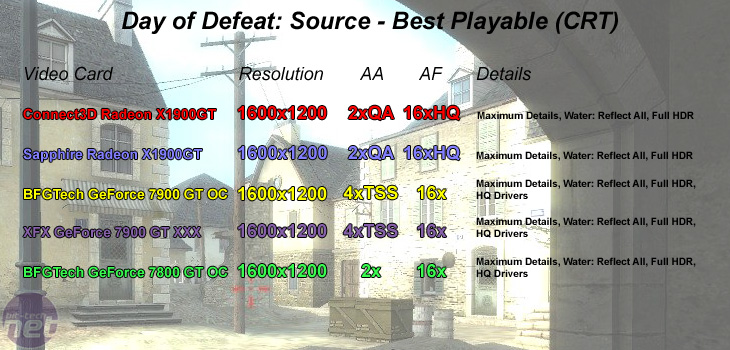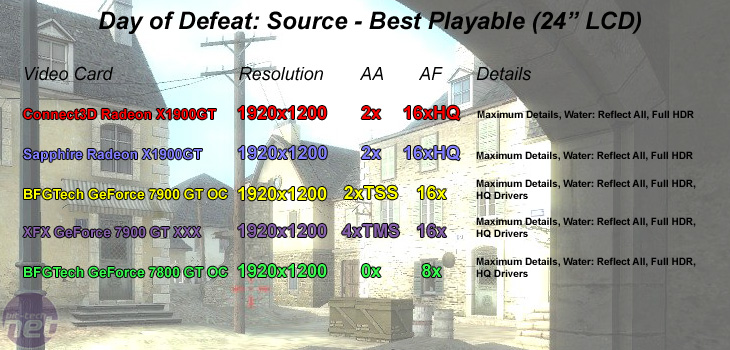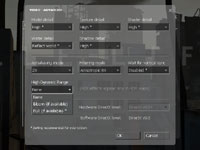Day of Defeat: Source
Publisher: ValveWe used the popular remake of the World War II online multiplayer, Day of Defeat: Source, which uses Valve's implementation of high-dynamic range rendering. We did three five minute portions of real world game play on the dod_anzio map. We connected to three different public servers each with a ping of less than 30ms and 16-20 players in the game when we were recording the frame rates.
Anti Aliasing and Anisotropic Filtering were controlled from inside the game, and thus the drivers were left set to "Application Controlled". There are three options for the method of HDR used in this title. You can either disable HDR completely, make use of "Bloom" which is just what it says and less resource hungry in comparison to "Full" which, again is just what it says. It utilises a full dynamic range with the iris effect too.
We have written quite a bit about Half-Life 2: Lost Coast, Day of Defeat: Source and how Valve has implemented HDR in to the Source Engine. You can check out the articles listed below for more information on The Lost Coast & Day of Defeat: Source.
- Half-Life 2: Lost Coast HDR overview
- Half-Life 2: Lost Coast hands on
- Half-Life 2: Lost Coast Benchmarks & Video
- Day of Defeat: Source
- Cinematic Effects in Source
CRT gaming:


There were some slight differences in the minimum frame rates between the two cards - this is down to the nature of the way that we test the highest playable settings in this title. The game is predominantly a multiplayer game and doesn't have the option to use bots, so we're playing the game on a public server for five minutes and its hard to control what other players are doing.
We can only follow a similar route in-game and we have found that a five minute period tends to average itself out. The average frame rates were very consistent and well within test error, so we're perfectly happy to say that there is no difference in the gaming experience delivered by either Radeon X1900GT.
The two GeForce 7900 GT's were both playable at 1600x1200 with 4x Transparency Supersampling AA, 16xAF along with forcing high quality driver settings in the NVIDIA control panel. Both cards returned a higher average frame rate than the two Radeon X1900GT's, but the minimum frame rate on the BFG Tech GeForce 7900 GT was slightly lower.
Widescreen LCD gaming:


The XFX GeForce 7900 GT XXX Edition delivered a better gaming experience than the two Radeon X1900GT's, as it was playable at 1920x1200 4x Transparency Multisampling AA, 16xAF with maximum in-game details applied. The average frame rate dropped below 50 frames per second, but the all-important minimum frame rate remained healthy, as it only dropped to 29 fps during our three five-minute run throughs.
The BFG Tech 7900 GT OC was not particularly smooth with 4x Transparency Multisampling AA enabled. Also, it wasn't smooth enough with Transparency AA disabled altogether. As a result, we had to settle for 2x Transparency Supersampling AA at 1920x1200 with maximum in-game details.
The 7800 GT OC was unable to play this game smoothly with Anti Aliasing enabled at the native resolution. There were times when the frame rate dropped lower than what we'd say was completely smooth, but the frame rate stayed relatively acceptable - the hitches weren't too common. If you're running a slower GeForce 7800 GT, you'll find that lowering the water detail will help to remove the hitches, as this is where the card appeared to struggle a lot.

MSI MPG Velox 100R Chassis Review
October 14 2021 | 15:04









Want to comment? Please log in.